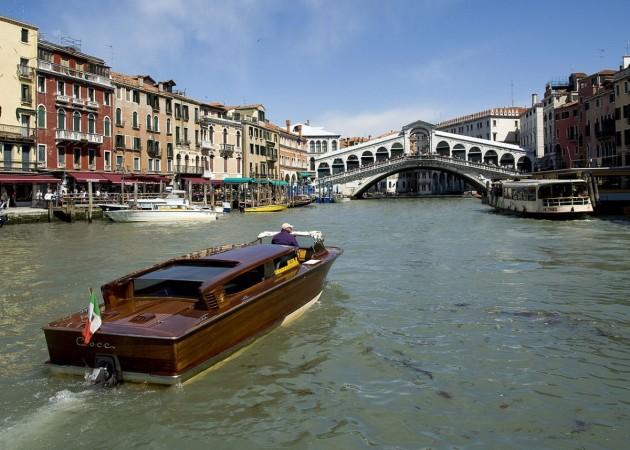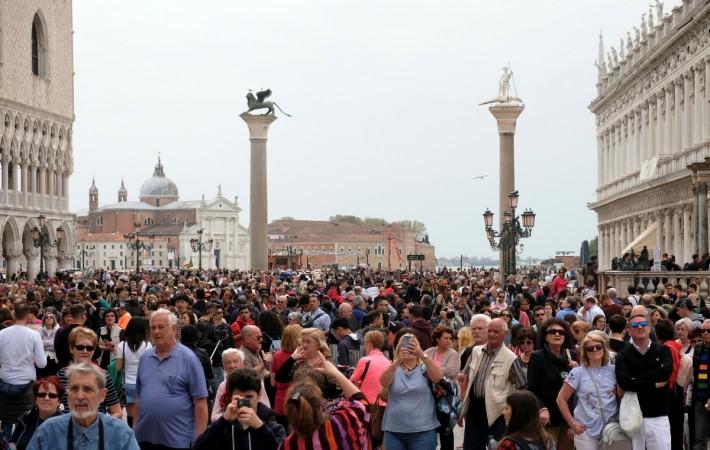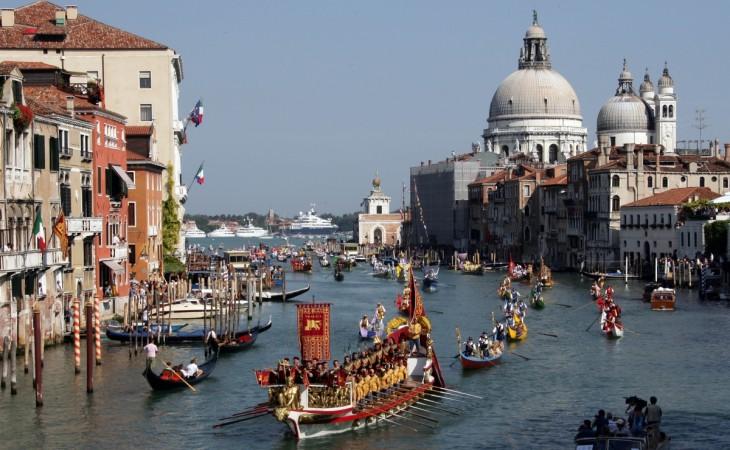Reeling from devastating floods this week, Venice suffered another exceptional high tide on Sunday, November 17 with the water peaking at 150 cm (4.9 feet), marking the worst week for the city since official tide statistics were produced in 1872. The city's center for tide forecasts had warned the tide could reach 160 cm on Sunday and the high mark hit at 1210 GMT was not far short of that.

Water flooded St. Mark's Square and hundreds of voluntary workers were helping citizens cope with the emergency. The city beloved around the world for its canals, historic architecture and art, was hit by a high tide at 187 cm (6.14 feet) on Tuesday. That was just short of the record 194 cm set in 1966 and caused the city's worst flooding in 50 years. In normal conditions, tides of 80-90 cm are generally seen as high but manageable.
With four tides above 140 cm since Monday, this is the worst week for high tides in Venice since 1872 when official statistics were first produced. Mayor Luigi Brugnaro, who has been appointed special commissioner to deal with the emergency, estimated damages from the flooding in the city since Tuesday at around 1 billion euros ($1.10 billion).
Authorities in Florence and Pisa were also closely monitoring the Arno river, whose water levels rose rapidly in the night due to heavy rain. Italy's longest river, the Po, which runs across northern Italy passing through Turin, was also being monitored after its level rose by 1.5 meters in the last 24 hours due to heavy rain.

'Another monumental "acqua alta," or "high water'
As historic floods inundated Venice more than a half-century ago, one reader in Scotland expressed worry about the fate of the "astonishing, but soon-to-vanish" Italian city. "This is certainly the moment to draw attention not to the cats of Venice but to its buildings, which are slowly but surely disintegrating," the reader wrote. "Once the 'pearl of the Adriatic,' undoubtedly one of the wonders of the world, stucco is now peeling off its palaces. ... Will somebody do something quickly?"
Earlier this week, Venice faced another monumental "acqua alta," or "high water," this time coming just inches shy of the 1966 record. Dispatches from the scene described people tromping around in cheap rain boots as they walked single-file on footbridges elevated over flooded piazzas or waded through knee-high water. An estimated 70 percent of the city was submerged, and Venetians endured another exceptional tide Sunday, the AP reported.
Flooding in Venice is not merely an inexpensive inconvenience. Named a UNESCO World Heritage Site in 1987, Venice is home to priceless works of art by such Italian Renaissance masters as Tintoretto, Giorgione and Titian; historic basilicas; and a unique way of lagoon-based metropolitan living for about 50,000 residents. According to experts, it's also a sobering preview of how climate change, accelerated by human behavior, will not just complicate Venetians' unique and fragile way of life but wash it away entirely.
'Venice is underwater. Other European cities could be next'

"The disaster that struck Venice is a blow to the heart of our country," Italian Prime Minister Giuseppe Conte said in a statement Wednesday. "It hurts to see the city so damaged, its artistic heritage compromised, its commercial activities on its knees."
More than a half-dozen popular sites were damaged by the latest flood, including the 11th-century St. Mark's Basilica; the Gritti Palace along Venice's grand canal, a private residence turned luxury hotel; and the Venetian-Gothic style Doge's Palace.
Workers assessing the damage that the corrosive, salty floodwater had on the ancient marble floors of St. Mark's Basilica found chipped and missing parts of the marble. There's also concern about the long-term damage to the pillars supporting the structure — and some of the floods damaged marble that was recently replaced after a round of intense flooding in 2018.
'Worried for the basilica'
Mario Piana, who heads the restoration, previously told that the church is nearly covered with a mosaic of gold and marble from floor to ceiling, with much of the flooring dating to 1094. "I'm worried for the basilica," Piana said, "The acqua alta does not create immediate, obvious damage. On the outside, you do not immediately see anything. But it is comparable to radiation exposure. In a week, you lose your hair. In a year, you might be dead."

Elsewhere in Venice, volunteers carefully leafed through pages of centuries-old sheet music that had been soaked by floodwater. The Italian Society of Authors and Editors said Venice's bookstores and libraries were "gravely damaged," according to the AP.
"Venice is used to being constantly surrounded by water, but this is really something else," Toto Bergamo Rossi, director of Venetian Heritage, told CNN. "The main issue is saltwater. When salt permeates the materials of these buildings — be them marble, tiling, plaster or wood — it crystallizes and ascends vertically once the weather gets drier, from the ground to the first floor and so on. It's almost like cancer for these structures, all the more so when they are so old. The entire wall system can be affected."
Tourists in Venice
Flooded Venice had tourists taking selfies and residents in tears. Venice's long-term prospects were grim, according to Oppenheimer, who wrote about rising sea levels in a recent U.N. report on climate change. Venice faces the twin threats of rising sea levels — which affect many coastal cities — and a sinking city. The weight of the city itself is compressing the soil below the archipelago, and the underlying base is losing further volume because of residents draining groundwater for drinking, Oppenheimer explained.
"Imagine you're in a bathtub and you're gradually lowering your body into the tub as the water level is rising," he said. "You get covered pretty fast." Venice will see that cycle quickening as time goes on. According to Oppenheimer's Intergovernmental Panel on Climate Change report, "extreme sea-level events" that recurred once every 100 years will be expected to recur once every six years by 2050. By 2100, that speeds up to once every five months.

"The safest thing to say is, through 2050, climate change and sea-level rise is more or less baked in: What we're going to get, we're going to get, and emissions reduction won't have much of a salutary effect in reducing the amount of sea-level rise," Oppenheimer said. After 2050, Venice's prospects will depend on how much humans have done to put a dent in the carbon emissions speeding climate change.
"When you get beyond that, it starts to make a bigger difference if we have a high-emissions world or a low-emissions world," he said. Artwork can be moved; marble floors of churches less so. The historical structures could remain a draw for years to come, but Oppenheimer said that, without actual residents, Venice could become a beautiful but empty ancient city."What we'd be losing is Venice as a real living place."
(With inputs from wires)

















